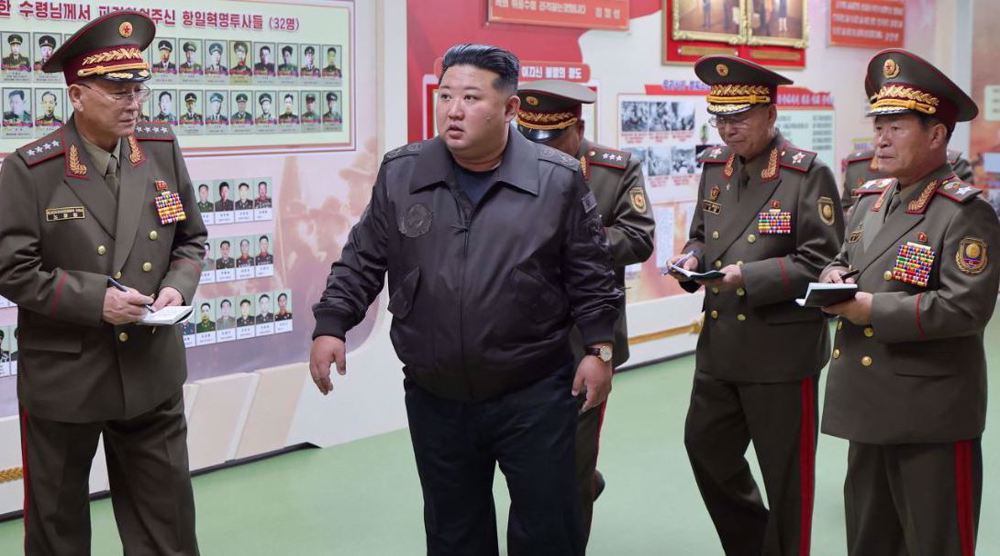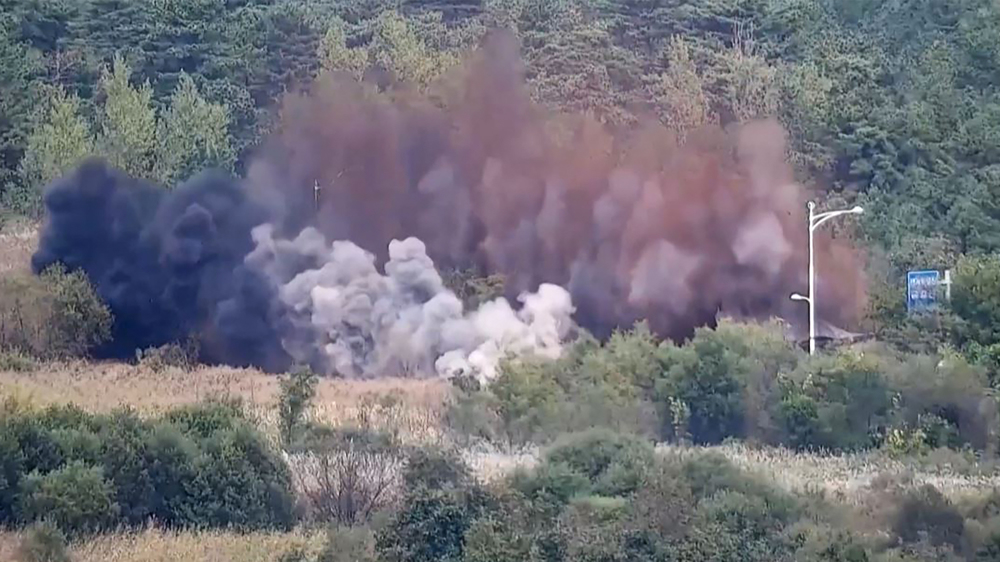THAAD deployment to turn region into nuclear battlefield: North Korea
North Korea has warned that the deployment of a US-made missile system in South Korea will turn the Korean Peninsula into a nuclear battlefield.
The Terminal High-Altitude Area Defense (THAAD) "is a source of a nuclear disaster being brought to our race at the moment,” said a report in North’s state-run Korean Central TV on Wednesday.
The installation of THAAD began last month amid rising tensions over North Korea’s ballistic and nuclear tests. China and Russia have also criticized the deployment of THAAD, saying it would significantly affect the balance of power in the region and would lead to more instability. Washington and Seoul had agreed on the installation in the summer of 2016.
The US missile system is equipped with a powerful detection system known as an X-band radar, which experts say would destabilize regional security and upset the region’s current military balance.
Read More:
- US starts transporting THAAD parts to deployment site in South Korea: Video
- South Korean protesters block entrance to THAAD installation site
The North Korean report stressed that the missile system’s deployment would “turn the Korean Peninsula into a battlefield for a nuclear war among powerful countries.”
In a move showing Pyongyang’s intelligence-gathering capabilities, it went on to show what it claimed was satellite imagery of the system’s precise location on a South Korean golf course.
The system's launcher and radar can be seen, circled in black, on the golf course located in the South’s Seongju County.

“The satellite pictures show the THAAD (missile) launcher is currently deployed near the northern ridge of the Seongju golf course while the X-band radar and other auxiliary equipment are installed near the western ridge from the center,” it said.

Pyongyang’s claims came just a day after China’s military tested a new type of missile in an area close to the Korean Peninsula.
Read More:
- China tests new missile near Korean Peninsula
- N Korea threatens to turn US submarine into ‘underwater ghost’
- North Korea: US bringing nuclear war to region
Tensions have been on the rise on the peninsula over the past weeks.
Unsettled by North Korean missile and military nuclear programs, the United States has adopted a war-like posture, sending a strike group and conducting joint military drills with North Korea’s regional adversaries Japan and South Korea.
Pyongyang defends its missile and nuclear programs as a means of protecting the country from US hostility.
In addition to a naval strike group, which includes the large USS Carl Vinson aircraft carrier, Washington deployed two supersonic bombers over the peninsula during a joint exercise with South Korea’s air force in early May. The USS Michigan nuclear submarine has also joined the strike group.
VIDEO | Press TV's news headlines
Iranian satellites launched into space as private sector debuts in space industry
VIDEO | Iran, Azerbaijan conduct joint maritime rescue operations
VIDEO | Yemen’s Red Sea divide: Naval forces block Israeli-linked ships in strategic ‘parting of the water’
VIDEO | Southern Gaza: Israel’s facade for famine and suffering
VIDEO | IOF hampering humanitarian aid
VIDEO | Sharmahd: Justice Done
Iran repeatedly warned Israel not to test its will: FM













 This makes it easy to access the Press TV website
This makes it easy to access the Press TV website